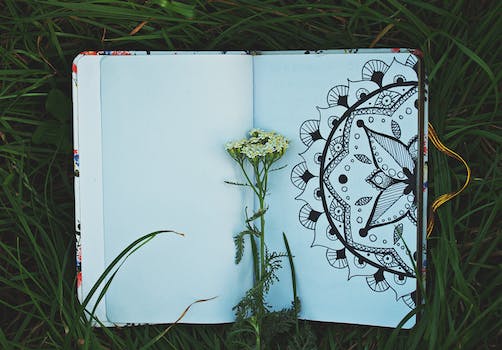

-
Table of Contents
Unveiling the captivating artistry of Bali Dance.
Introduction
Bali, an enchanting island in Indonesia, is renowned for its rich cultural heritage and vibrant arts scene. Among its many artistic treasures, the Bali Dance stands out as a captivating form of expression that showcases the island's beauty and grace. This traditional dance form, deeply rooted in Balinese Hinduism, combines intricate movements, colorful costumes, and mesmerizing music to create a truly enchanting experience. In this article, we will delve into the captivating world of Bali Dance, exploring its history, significance, and the mesmerizing beauty it brings to the island.
Traditional Balinese Dance: A Glimpse into Bali's Rich Cultural Heritage
Exploring the Beauty of the Bali Dance
Traditional Balinese Dance: A Glimpse into Bali's Rich Cultural Heritage
Bali, an island paradise in Indonesia, is not only known for its stunning beaches and lush landscapes but also for its vibrant and captivating traditional dance forms. These dances are an integral part of Balinese culture and have been passed down through generations, preserving the island's rich cultural heritage. In this article, we will delve into the beauty of the Bali dance and explore its significance in Balinese society.
The Bali dance is a visual feast for the eyes, with its intricate movements, colorful costumes, and expressive gestures. Each dance tells a story, often inspired by ancient Hindu epics or local folklore. The dancers, adorned in elaborate costumes and headdresses, gracefully move their bodies in sync with the music, creating a mesmerizing spectacle that transports the audience to another world.
One of the most famous Bali dances is the Legong, a classical dance performed by young girls. The Legong is characterized by its delicate movements, precise footwork, and intricate hand gestures. It tells the story of a mythical princess and her journey through love and loss. The dancers, with their graceful movements and expressive eyes, bring the story to life, captivating the audience with their skill and artistry.
Another popular Bali dance is the Barong, a dramatic dance that depicts the eternal battle between good and evil. The Barong, a mythical creature resembling a lion, is the hero of the story, while the evil witch Rangda represents the forces of darkness. The dancers, dressed in elaborate costumes, engage in a fierce battle, showcasing their agility and strength. The Barong dance is not only a form of entertainment but also a spiritual ritual, believed to protect the community from evil spirits.
In addition to these classical dances, Bali is also home to a variety of folk dances that reflect the island's diverse cultural traditions. The Kecak dance, for example, is a unique form of dance-drama that originated in the 1930s. It is performed by a large group of men, who sit in a circle and chant rhythmically, creating a hypnotic soundtrack for the dance. The Kecak tells the story of the Ramayana, an ancient Hindu epic, and the dancers, with their synchronized movements and powerful voices, bring the story to life in a truly captivating manner.
The Bali dance is not only a form of artistic expression but also a means of preserving Balinese culture and identity. It is deeply rooted in the island's religious beliefs and serves as a way to connect with the spiritual world. The dances are often performed during religious ceremonies and temple festivals, where they are believed to invoke the blessings of the gods and bring prosperity to the community.
Furthermore, the Bali dance plays a significant role in the island's tourism industry, attracting visitors from all over the world. Many tourists come to Bali specifically to witness these enchanting performances and experience the magic of Balinese culture firsthand. The dances are often showcased in cultural centers and hotels, providing employment opportunities for local dancers and musicians.
In conclusion, the Bali dance is a testament to the island's rich cultural heritage and artistic prowess. Its beauty lies not only in the graceful movements and colorful costumes but also in the stories it tells and the emotions it evokes. Whether it is the classical Legong, the dramatic Barong, or the rhythmic Kecak, each dance offers a glimpse into the soul of Bali, captivating audiences and preserving the island's cultural legacy for generations to come.
The Intricate Movements and Symbolism of Bali Dance: Unveiling the Secrets

Exploring the Beauty of the Bali Dance
The Bali Dance is a traditional form of dance that originates from the Indonesian island of Bali. It is a captivating art form that combines intricate movements with deep symbolism, creating a mesmerizing experience for both performers and spectators alike. In this article, we will delve into the secrets behind the Bali Dance, uncovering the meaning behind its movements and the cultural significance it holds.
One of the most striking aspects of the Bali Dance is its intricate movements. Every gesture, every step, is carefully choreographed to convey a specific meaning. The dancers' bodies seem to flow effortlessly, their movements fluid and graceful. This is achieved through years of training and practice, as dancers must master not only the physical techniques but also the emotional and spiritual aspects of the dance.
The Bali Dance is deeply rooted in Balinese culture and religion, and its symbolism reflects this. Each movement represents a story or a concept, often drawn from Hindu mythology. For example, the "Legong" dance tells the story of a mythical bird, while the "Barong" dance depicts the eternal struggle between good and evil. Through their movements, the dancers bring these stories to life, evoking a sense of wonder and enchantment.
In addition to its symbolic meaning, the Bali Dance also serves as a form of spiritual expression. It is believed that the dance connects the dancers with the divine, allowing them to channel the energy and power of the gods. This spiritual aspect is evident in the dancers' intense focus and concentration, as they strive to embody the essence of the characters they portray. Through their movements, they seek to transcend the physical realm and enter a state of spiritual transcendence.
The Bali Dance is not only a visual spectacle but also a auditory delight. The accompanying music, known as "gamelan," is an integral part of the performance. It consists of a variety of traditional instruments, such as metallophones, gongs, and drums, which create a rich and vibrant sound. The music serves to enhance the dancers' movements, adding depth and rhythm to their performance. It is a harmonious blend of melody and movement, creating a truly immersive experience for the audience.
The Bali Dance is not just a form of entertainment; it is a celebration of Balinese culture and identity. It is performed during religious ceremonies, festivals, and special occasions, serving as a way to honor the gods and ancestors. The dance is deeply ingrained in the fabric of Balinese society, and its preservation is of utmost importance to the local community. Efforts are being made to pass down the knowledge and techniques of the Bali Dance to future generations, ensuring that this beautiful art form continues to thrive.
In conclusion, the Bali Dance is a mesmerizing art form that combines intricate movements with deep symbolism. Its beauty lies not only in the physical techniques but also in the spiritual and cultural significance it holds. Through their movements, the dancers bring stories to life and connect with the divine. The accompanying music adds another layer of richness to the performance, creating a truly immersive experience. The Bali Dance is a celebration of Balinese culture and identity, and its preservation is vital to the local community. So, next time you have the opportunity to witness the Bali Dance, take a moment to appreciate the beauty and meaning behind this captivating art form.
Bali Dance: A Mesmerizing Fusion of Grace, Rhythm, and Storytelling
Bali Dance: A Mesmerizing Fusion of Grace, Rhythm, and Storytelling
Bali, an island in Indonesia known for its stunning landscapes and vibrant culture, is also home to a rich tradition of dance. The Bali dance is a mesmerizing art form that combines graceful movements, rhythmic patterns, and captivating storytelling. It is a unique expression of the island's cultural heritage and has captivated audiences from around the world.
The Bali dance is deeply rooted in the island's religious beliefs and mythology. It is often performed as part of religious ceremonies and rituals, as a way to communicate with the gods and ancestors. The dancers, adorned in elaborate costumes and intricate makeup, become vessels for the spirits, channeling their energy and bringing their stories to life.
One of the most famous Bali dances is the Legong, a dance that originated in the royal courts of Bali. It is characterized by its delicate movements, intricate hand gestures, and expressive facial expressions. The Legong tells stories from Hindu epics such as the Ramayana and the Mahabharata, as well as local folklore and legends. The dancers, with their precise footwork and graceful movements, transport the audience to a different world, where gods and demons coexist.
Another popular Bali dance is the Barong, a dance that depicts the eternal battle between good and evil. The Barong, a mythical creature resembling a lion, represents good, while the Rangda, a witch-like figure, represents evil. The dance is a dynamic display of strength and agility, with the dancers embodying the characters and engaging in a fierce battle. It is believed that the Barong dance has the power to ward off evil spirits and bring blessings to the community.
The Bali dance is not only a visual spectacle but also a celebration of rhythm and music. The dancers move in sync with the traditional gamelan orchestra, a collection of percussion instruments such as gongs, drums, and xylophones. The intricate melodies and complex rhythms of the gamelan create a hypnotic atmosphere, enhancing the beauty and intensity of the dance. The dancers' movements are intricately choreographed to match the music, creating a seamless fusion of sound and motion.
The Bali dance is a testament to the island's artistic and cultural heritage. It is a form of storytelling that has been passed down through generations, preserving the traditions and beliefs of the Balinese people. The dance is not only performed on special occasions but also taught in schools and community centers, ensuring its continuity and relevance in modern times.
For those visiting Bali, witnessing a traditional dance performance is a must. The island is home to numerous dance troupes and cultural centers that offer regular performances for tourists and locals alike. These performances provide a glimpse into the rich tapestry of Balinese culture, allowing visitors to immerse themselves in the beauty and magic of the Bali dance.
In conclusion, the Bali dance is a mesmerizing fusion of grace, rhythm, and storytelling. It is a unique expression of the island's cultural heritage and a testament to the artistic prowess of the Balinese people. Whether it is the delicate movements of the Legong or the fierce battle of the Barong, the Bali dance captivates audiences with its beauty and intensity. It is a celebration of tradition, spirituality, and the power of art to transcend boundaries. So, if you find yourself in Bali, make sure to experience the enchanting beauty of the Bali dance.
Q&A
1. What is the Bali Dance?
The Bali Dance is a traditional dance form originating from the Indonesian island of Bali.
2. What makes the Bali Dance unique?
The Bali Dance is known for its intricate movements, vibrant costumes, and expressive storytelling, often depicting mythical tales and religious themes.
3. How can one explore the beauty of the Bali Dance?
To explore the beauty of the Bali Dance, one can attend traditional dance performances in Bali, visit cultural centers or temples that showcase the dance, or participate in dance workshops to learn the basic movements and techniques.
Conclusion
In conclusion, exploring the beauty of the Bali dance is a captivating experience that allows individuals to immerse themselves in the rich cultural heritage of Bali. The intricate movements, vibrant costumes, and rhythmic music create a mesmerizing spectacle that showcases the artistic prowess and spiritual significance of this traditional dance form. Whether witnessing a performance or actively participating in a dance class, the Bali dance offers a unique opportunity to appreciate the grace, elegance, and storytelling that is deeply ingrained in Balinese culture.












